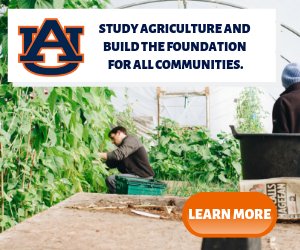In the United States, Agriculture majors take the classroom outside! For an agriculture major in the United States, the classroom is in the barn, in the cafeteria, in the forest, on the sport field and even in the lakes, rivers and ocean. International students will push themselves to apply what they have learned in classroom to the real world. This article will take a look at what to expect when studying agriculture in the US.
The study of agriculture is a very broad field and includes plants, animals and nutrition. Our society relies on what the land can produce. There are over 30 majors under the study of agriculture depending on the school you choose and even more options for career paths. An international student has choices which include majors in agricultural and domestic animal services, agricultural business management, agricultural production operation, animal sciences, food science and technology, horticultural services, plant science and soil science. Depending on the choice made, international students will focus on animals, nutrition or plants for a career. This is what to expect when studying agriculture.
Land Grant Universities
Many international students attend land-grant universities to learn how to study agriculture.
There are land-grant universities in each of the 50 states that offer majors in agriculture. One key aspect of the land-grant universities is the agricultural experiment station. It is a research center to solve problems and research improvements in agriculture. In addition, at a land-grant university there is also a Cooperative Extension associated with each land-grant university. Within Cooperative Extension the agricultural educators interact with agricultural producers and share best practices and research. The Cooperative Extension educators are located on campus as well as in the communities.
Classes and Labs
Typically, agriculture is studied in a hands-on environment so if you are a kinesthetic learner (learn by doing) then you will thrive in this industry. International students will be in the presence of animals and plants daily no matter which field they choose, from dairy management to equestrian studies to horticulture.
Agriculture is an ancient practice and the key to sustaining human development on planet Earth. However, the ways we approach agriculture have changed dramatically, especially with the introduction of more sophisticated technology. The study of agriculture has turned into a great deal of science and math.
When studying agriculture, you will need to take a great many math and science courses. The science classes may be: animal and/or plant biology, chemistry, physical science, genetics, animal nutrition, human nutrition, animal reproduction and soil science. The math courses will most likely include economics. Nutrition classes may focus on animals or humans. Some courses even combine nutrition with food science.
In science classes, an international student will attend both a class and a lab related to that class. The combination of class and lab is one course. For example you may find yourself meeting twice a week in lecture setting and then an additional weekly lab that will apply these concepts to the real world.
The classes that an international student will take will necessitate being outside the classroom. Typically agricultural students don’t want to work in an office. One of the main reasons why international students are attracted to an agricultural career is because they want to work outdoors. Studying agriculture requires you to experience it firsthand.
However, some agricultural careers do involve a laboratory. An international student could become a researcher which would include a laboratory but also may include the outdoors to study plants or animals.
When studying agriculture, you can expect that the subject matter will be varied, hands-on, and will include science and involve plants, animals or nutrition.

